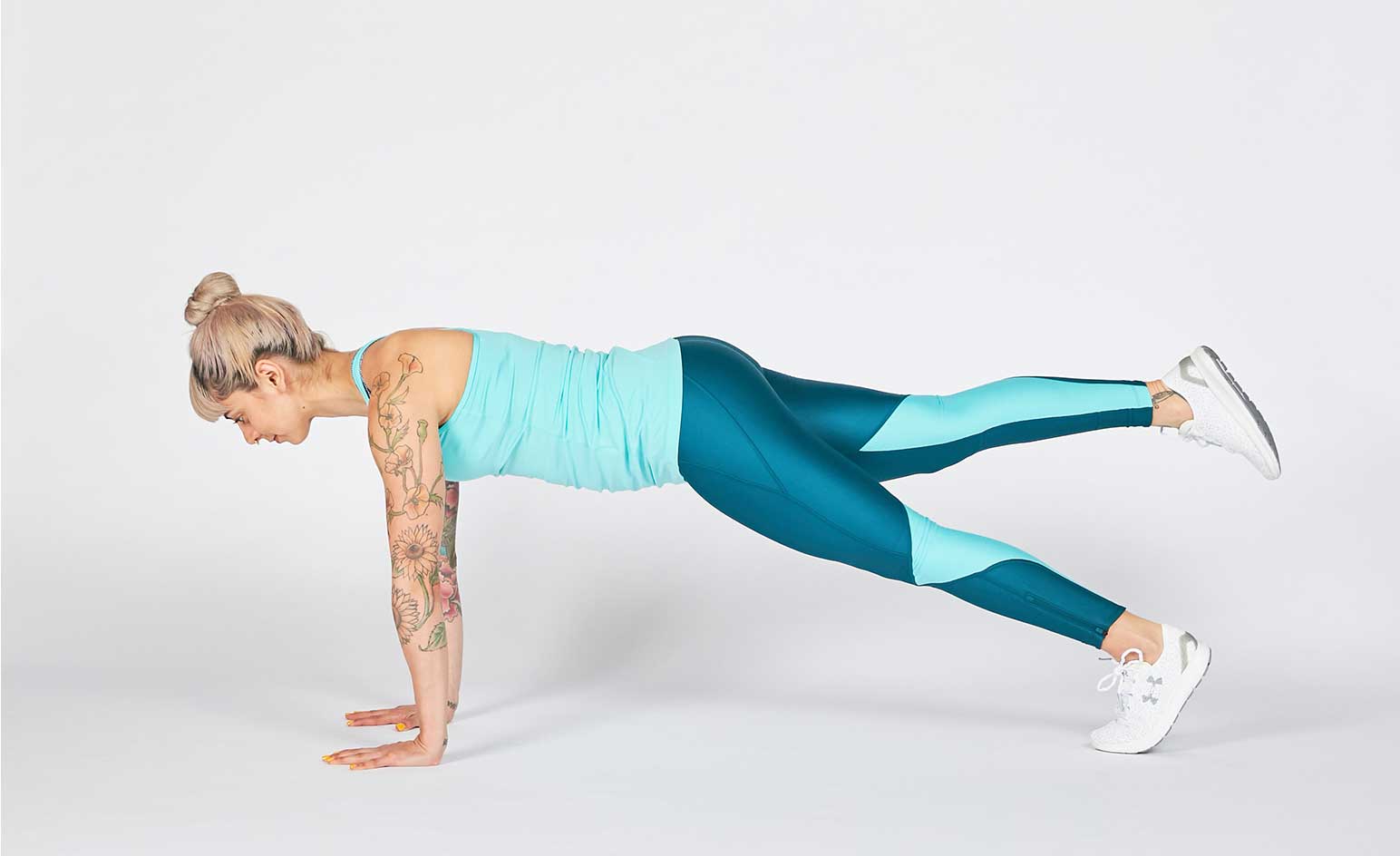The formula for getting stronger is pretty simple: Use more weight or do more reps (or both). Eat, sleep and repeat. This concept is called progressive overload, meaning the body adapts to increased stress by building itself up stronger over time.
Progressive overload works for all muscle groups, including core muscles. Made up of your abdominals and obliques, your core is unique in that it works hard to create movement (such as situps or crunches) but also works hard to resist movement while doing exercises like squats, deadlifts or carrying heavy objects at your sides. That said, sometimes you can’t just keep adding reps or weight to make core exercises harder.
Here are four ways to make your core exercises harder without adding reps or weight.
1. GO SLOW
Slowing the tempo of your core exercises can make them surprisingly more difficult. And we’re talking more than just adding duration to a set of planks.
Exercises like planks are isometric, meaning you’re holding a static position. Other exercises like crunches and anti-rotation presses have an eccentric (lengthening) and concentric (contraction) phase. Try slowing down one or both phases (or adding a pause between them) to make your abs scream.
For example, add a 5-second eccentric to your reverse crunches … Or add an extended pause to your ab wheel rollouts.
2. INCREASE THE LEVER LENGTH
Your muscles and bones act together as levers to create movement. Even if you hated physics class, understanding a little about levers goes a long way to help you step up your core strength. Increasing the lever length during a core exercise automatically cranks up the intensity because it’s harder for your abs to hold a steady position.

Try moving your arms further in front of you during planks … Or stepping further away from the barbell during anti-rotation landmines.
3. EXHALE FULLY
Want stronger abs? Just breathe. Your core is largely responsible for inhalation and exhalation, the latter of which can up the abdominal ante instantly. Add a full exhale during an smattering of core exercises, and you’ll immediately notice burning and shaking, two indicators your abs are working overtime.
Rather than holding planks for a set amount of time (e.g., 30 seconds), try holding for 5 full breaths, taking 6–8 seconds to fully exhale as if you were blowing up a balloon.
4. REMOVE CONTACT POINTS
The fewer parts of your body you have touching the ground, the harder your core exercise will be. Simply taking away contact points will force your abs to stabilize your body and prevent extension and rotation of the hips and spine.
Start simple, such as 1-leg planks … Or vary which body parts touch the ground, like during front plank arm salutes.

You don’t need abs of steel to get started on a quality core training routine. Even if you’re starting from square one, hard work and a little patience is all you need to make your way to more advanced core exercises. Try this sample progression:

Start with 3 sets of 3 breaths. Once you can do 6 full breaths, progress to the next exercise.

Start with 3 sets of 3 breaths per side. Once you can do 6 full breaths per side, progress to the next exercise.

Start with 3 sets of 3 breaths. Once you can do 6 full breaths, progress to the next exercise.

Start with 3 sets of 5 reps per side. Once you can do 10 reps per side, progress to the next exercise.

Start with 3 sets of 5 reps. Once you can do 10 reps, you’re a core-strength legend.




